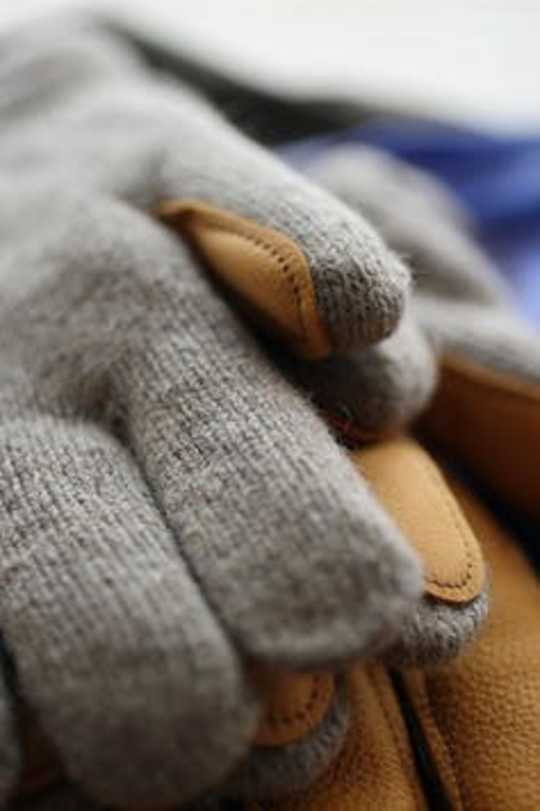
You’re no more likely to lose heat from your head than other parts of your body – except your hands and feet. Taylor Mackenzie
WQhen the weather starts to cool down and winter clothes enter rotation in our wardrobes, some peculiar combinations emerge: shorts and scarves; thongs and jackets; T-shirts and beanies. The last is often explained with an old saying: you lose most of your head through your head. But, in fact, scientists know this to be untrue.
Firstly, let’s go back to the basics of heat exchange.
Human heat exchange is dictated by a combination of physical principles, variations in body shape and size, and physiological control mechanisms such as altered skin blood flow, shivering and sweating. These interactions maintain a stable deep-body temperature, which is typically just below 37°C.
While survivable extremes of 13.7°C and 46.5°C have been reported, you’re likely to feel miserable and unwell when this temperature drops below 35°C or rises above 40°C.
Physical principles
Looking beyond the body, heat is exchanged between all objects via dry pathways (radiation, convection, conduction) and through the evaporation of moisture.
For dry pathways, thermal energy moves from hotter to cooler regions, with its exchange rate depending on the temperature difference between these objects.
For evaporative cooling, water molecules leave moist surfaces to enter less humid air, taking heat with them.
These are the first principles of heat exchange.
Body shape and size
Heat is likely to be lost more rapidly from larger surfaces. Nevertheless, large masses have greater thermal stability, and resist rapid and significant changes in temperature. Thus, the interaction between surface area and mass provides another first principle: the temperature change of any object is dictated by the ratio of its surface area to its mass.
So a wafer-thin rectangular prism losses heat remarkably quickly, while a sphere, which has the smallest surface area to volume ratio of any object, provides the greatest resistance to heat loss. The relatively spherical shape of the human head, therefore, leads us to challenge the heat-loss myth on the basis of first-principles science.

The toco toucan’s beak allows the bird to quickly cool down. Flickr/Brent
But we can’t ignore the physiological control of skin blood flow, as this is how heat is transported to the skin for dissipation, and sweating, which facilitates heat loss when the air is hotter than the skin.
There are many examples of how natural selection led to physiological changes to support temperature regulation. Take the toco toucan: the large surface area of this bird’s bill, in combination with its blood supply, enables very efficient heat dissipation. The same applies to elephant ears.
In humans, the closest equivalents are the hands and feet.
Physiological control
The head is not an ideal radiator, even though it has many blood vessels close to its surface, since its skin blood flow does not vary significantly when one is either resting comfortably or dramatically cooled. Even when someone has a dangerously high temperature, head skin blood flow increases much less than that of the hands and feet for the same heating stimulus.
Plus most heads have about 50% hair coverage, which traps air and insulates against heat exchange. Although (sadly) not all heads conform with this generalisation.
The head is not great for evaporative cooling either. While the forehead is the most prolific sweat secretion site per unit area when we’re resting, sweating from sites inside the hairline occurs at half this rate.
 Gloves and socks will help keep you warm. K Hatanaka
Gloves and socks will help keep you warm. K Hatanaka
In fact, the head represents only about 7% of the body surface area, so its contribution to whole-body evaporative cooling at rest is only 10%, and less than that of the hand, back, thigh and lower leg. While this heat loss can triple during exercise, it still accounts for only 13% of total evaporation.
So it would seem that even though the temperature of the head makes it well suited to losing heat, neither its geometry nor its physiological responses to heating or cooling make it a critical site for heat loss.
Covering your head is no more effective at keeping you warm than covering most other body regions. In other words, you’re no more likely to lose heat from your head than other parts of your body – except your hands and feet. So wearing gloves and socks is your best bet.![]()
About the Author
Nigel Taylor, Associate Professor of Thermal Physiology, University of Wollongong
This article is republished from The Conversation under a Creative Commons license. Read the original article.
Books on The Environment from Amazon's Best Sellers list
"Silent Spring"
by Rachel Carson
This classic book is a landmark in the history of environmentalism, drawing attention to the harmful effects of pesticides and their impact on the natural world. Carson's work helped to inspire the modern environmental movement and remains relevant today, as we continue to grapple with the challenges of environmental health.
Click for more info or to order
"The Uninhabitable Earth: Life After Warming"
by David Wallace-Wells
In this book, David Wallace-Wells offers a stark warning about the devastating effects of climate change and the urgent need to address this global crisis. The book draws on scientific research and real-world examples to provide a sobering look at the future we face if we fail to take action.
Click for more info or to order
"The Hidden Life of Trees: What They Feel, How They Communicate?Discoveries from A Secret World"
by Peter Wohlleben
In this book, Peter Wohlleben explores the fascinating world of trees and their role in the ecosystem. The book draws on scientific research and Wohlleben's own experiences as a forester to offer insights into the complex ways that trees interact with one another and the natural world.
Click for more info or to order
"Our House Is on Fire: Scenes of a Family and a Planet in Crisis"
by Greta Thunberg, Svante Thunberg, and Malena Ernman
In this book, climate activist Greta Thunberg and her family offer a personal account of their journey to raise awareness about the urgent need to address climate change. The book provides a powerful and moving account of the challenges we face and the need for action.
Click for more info or to order
"The Sixth Extinction: An Unnatural History"
by Elizabeth Kolbert
In this book, Elizabeth Kolbert explores the ongoing mass extinction of species caused by human activity, drawing on scientific research and real-world examples to provide a sobering look at the impact of human activity on the natural world. The book offers a compelling call to action to protect the diversity of life on Earth.
























